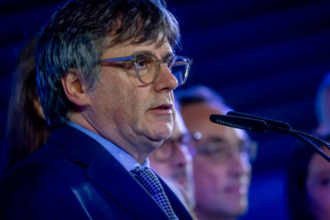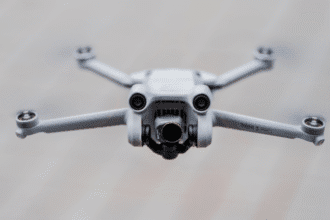What Happened on That Day of Sorrow and Chaos?
The scene was one of great sadness and practical difficulty the day Beslan started burying its dead. The route to the cemetery was choked with coffins crammed into so many automobiles. Every person living in this little Caucasian village had lost a relative or known someone slain during the terrible siege of School No. 1. Started by powerfully armed militants mainly from Chechnya, the terror onslaught lasted three agonizing days. Stunning numbers of individuals died—334 total, including 186 young kids. Still fresh in recollection is the terrible lament of Beslan’s moms and the total anguish engulfing the community. I remember the appalling picture of Alina, 11, in a white open casket in her front yard with her dolls gently next to her. Another memorable recollection is of Rima, who, along with hundreds of other hostages, spent three terrifying days packed into the hot school gym with her grandkids. Above them, the explosives hung from the basketball hoops were a consistently terrible presence.
- What Happened on That Day of Sorrow and Chaos?
- What Were the Early Lessons in Putinism?
- Why Did Putin's Visit Come So Late, and What Was Its Purpose?
- How Did the Kursk Incident Influence Putin's Approach?
- What Was the Impact of the Misplaced Statistic and Political Messaging?
- What Would a Western Democracy's Response Have Been Compared to Putin's Regime?
Rima, thinking back on her horrific experience, said, “I was ashamed to have survived.” She and her grandkids had to scale over the dead body of a tiny toddler as they escaped under fire. She begged God to pardon us for it through tears.
What Were the Early Lessons in Putinism?
Beslan’s pain connected with people throughout Russia and the globe in 2004. The catastrophe came from terrorists invading the institution, blazing in the air, and kidnapping hundreds of frightened students. They had gathered moms carrying balloons and small girls sporting big white bows in their hair. Whole families trapped in the dream had been commemorating the first day back to school. The terrorists started killing male hostages and loaded the gym with bombs. Launched four years earlier, Vladimir Putin’s aggressive battle against Chechen rebels had already spilled across the boundaries of the southern Russian republic that July. Ten persons were murdered when a Chechen woman exploded herself at a Moscow metro station the day before the Beslan siege. Suicide bombers had destroyed two aircraft before that, and there was a lethal attack on a music event.
Driven by their will not to “give in” to terrorists, two decades of disturbing doubts have remained over how Mr. Putin and his aides handled the attack on Beslan. Did they even make a go at negotiating? Given that the militants had clearly demanded Russian soldiers leave Chechnya, why did they assert the assailants made no political demands? Could more youngsters have been saved? Most importantly, with hundreds of hostages remaining inside the school, why did rescuers fire from tanks and deploy flamethrowers? Many saw the Beslan siege as a vital early lesson in Putinism, stressing his readiness to employ whatever measures required to quell resistance.
Why Did Putin's Visit Come So Late, and What Was Its Purpose?
Mr. Putin visited the remnants of School No. 1 twenty years later. He skipped the anniversary celebrations with the family even then. Two weeks ago, he set off alone. A few broken walls of the institution were kept as a monument, finally covered in a gold-tinted shroud and framed pictures of the dead. Mr. Putin set flowers under a wooden cross in the middle of the gym, where captives had been kept. Given it was Russia’s worst terror incident, most foreign leaders would find it unthinkable not to have visited this place sooner. Mr. Putin has always, however, favored being seen surrounded by troops or in fighter planes. For his action-man image, the graves of children he failed to save serve nothing.
Previously visiting Beslan soon after the siege fell apart, Mr. Putin entered under cover of darkness to visit a hospital. He told Beslan that while everyone in Russia was mourning with them, he had left before morning. “He arrived far too late,” the bereaved family said at the time. He should have stayed with us. President Putin did not, however, remain with the bereaved.
How Did the Kursk Incident Influence Putin's Approach?
Four years before Beslan, Mr. Putin had been changed by an experience with bereaved mothers. He spent five days ending his vacation and visiting the families, who replied angrily when the Kursk submarine sank in 2000. This encounter helped Mr. Putin develop a well-calibrated public presentation style. For his meetings, the norm became small, pre-vetted gatherings under strict control.
What Was the Impact of the Misplaced Statistic and Political Messaging?
Mr. Putin visited Beslan last month and only met three moms. For the state TV cameras, he said, “It was an awful act of terror that took the lives of 334 people”. Of that figure, 136 were young people. The mom, invisible to the camera, had to have gasped at his error. There were just 186 children. Everyone in that community carries this character deeply ingrained in their memories as a memorable fact. But Mr. Putin visited Beslan not to show sympathy; the bereaved moms were only tools. He underlined a political statement using their presence.
Mr. Putin reminded Russians of his triumph against terrorism twenty years ago. Now he contrasts that with his fight against “neo-Nazis” and a hostile West in Ukraine, thereby striving to win that battle too. The 2004 Putin playbook already included falsehoods and distortion. Officials at that time severely understated the total number of captives in Beslan. On the first day of the siege, when I got to town, I soon discovered that the school housed three times more hostages than officials had said. Residents verified this, but under tight direction, state TV reporters kept airing the official falsehood. Authorities minimized the possible death count, fearing troops may rush the institution.
What Would a Western Democracy's Response Have Been Compared to Putin's Regime?
After an assault ended in many more hostages dead than terrorists, I have long pondered what would happen to a government in a Western democracy. Such a government would probably have a thorough official investigation or struggle during the next election. Vladimir Putin, on the other hand, was not bothered by this. The European Court of Human Rights decided in 2017 that Russia had neglected its obligation to safeguard the hostages and had applied “indiscriminate force” as the siege came to an end. Desperate, grieving moms seeking justice brought the case. Still, Russia saw no fresh inquiry started, and no top officials took responsibility.
Putin was astonished and vowed to investigate when the three Beslan moms spoke with him in August. He has twenty years to perform. One notable adjustment Putin took shortly after the siege was the termination of direct elections for governors in Russia’s provinces, an action he said would increase security. The Beslan assault had no actual link. Opposition MPs warned of a developing dictatorship as parliament gathered to vote on this amendment. Two decades later, the opposition was eliminated. Democracy has been destroyed, and state media is totally under control. Mr. Putin learned mostly about growing control from the Beslan siege.








